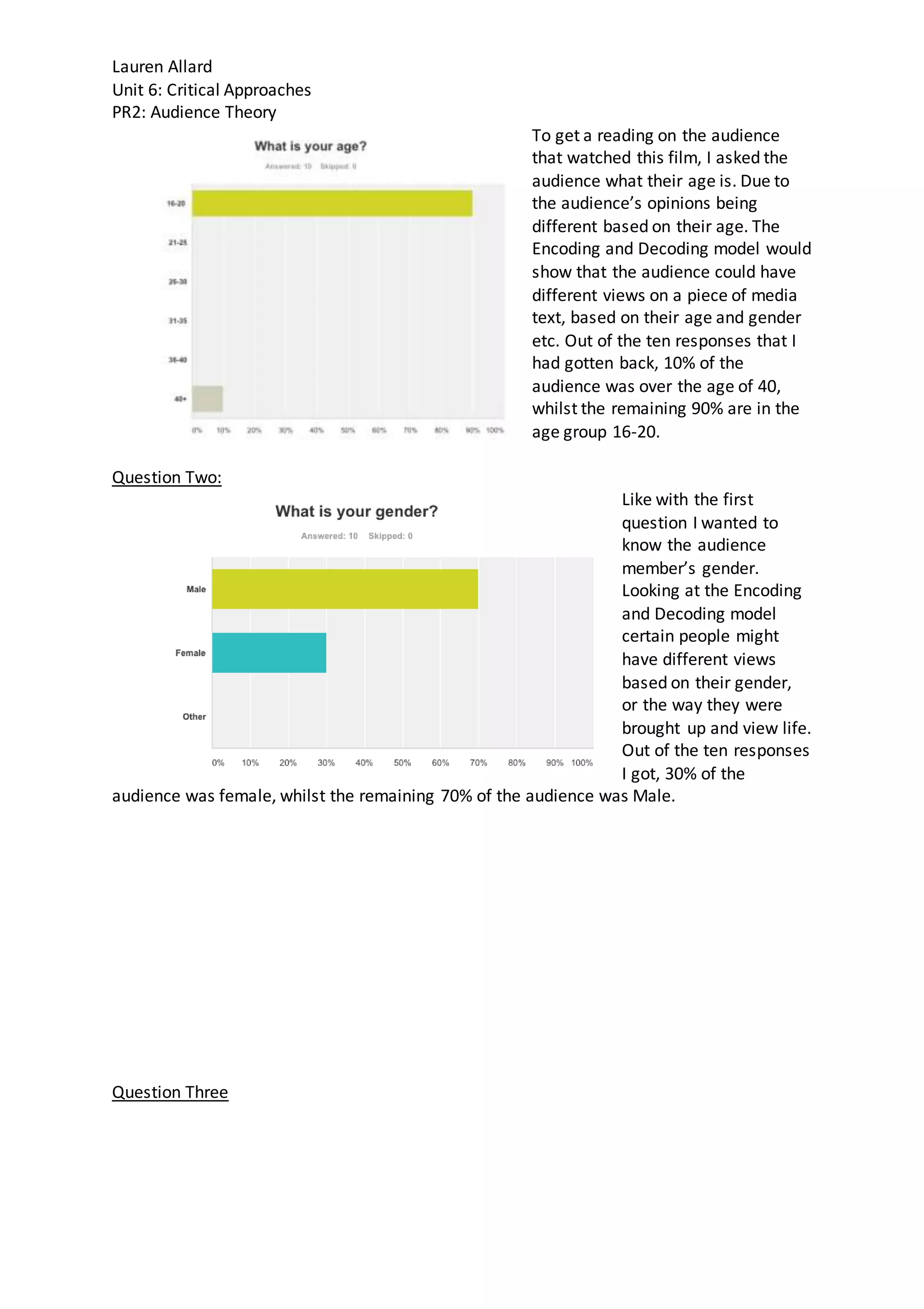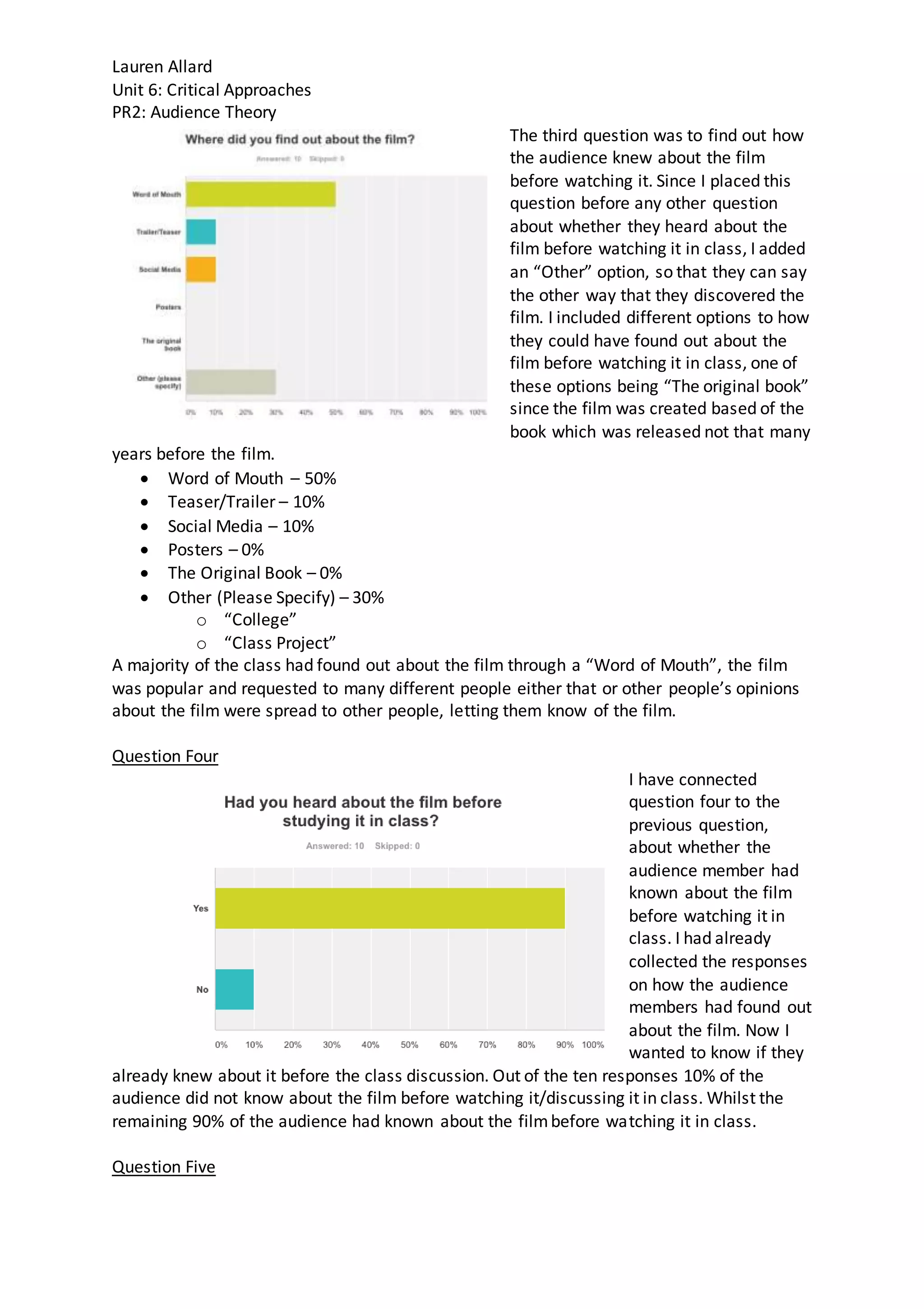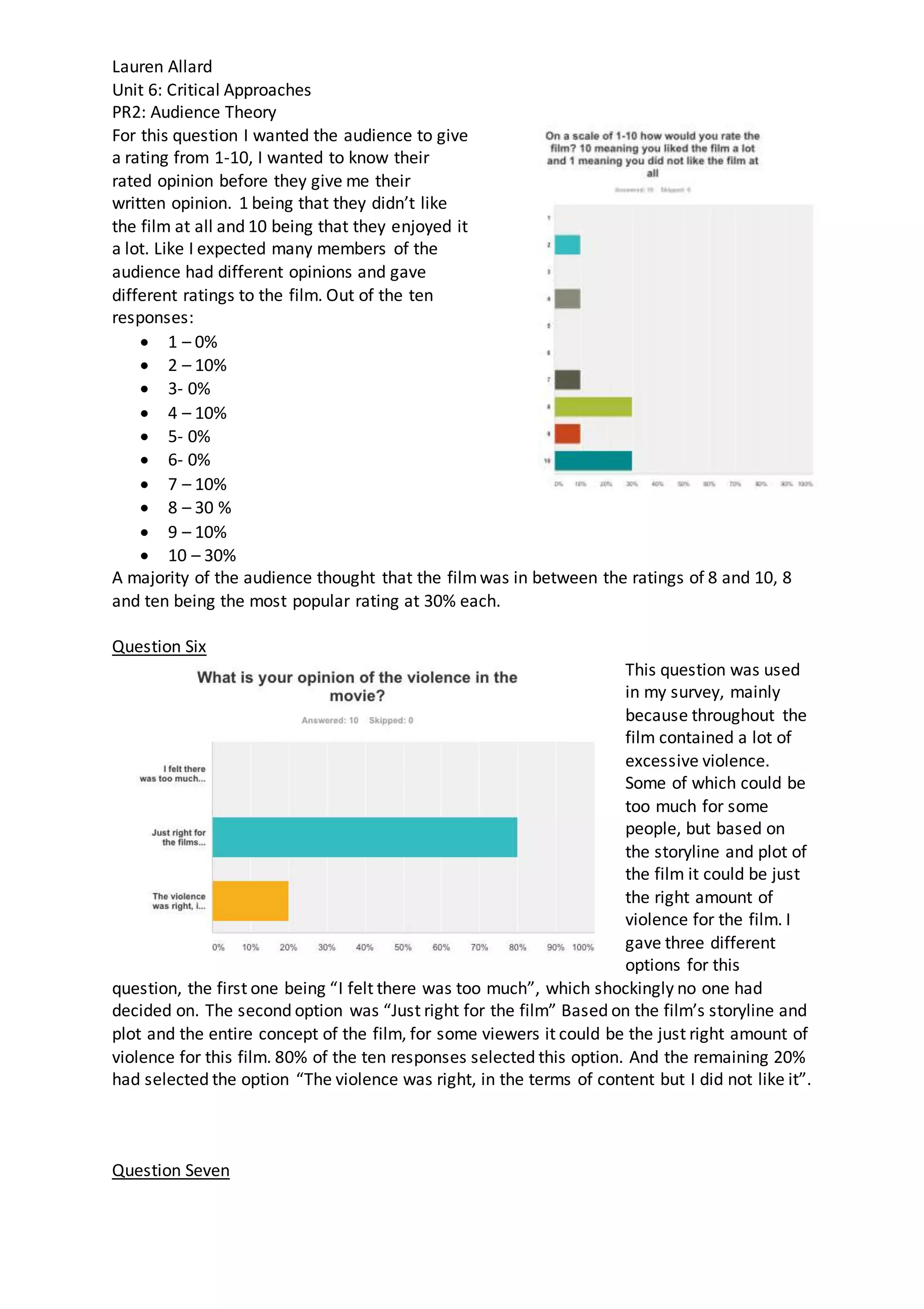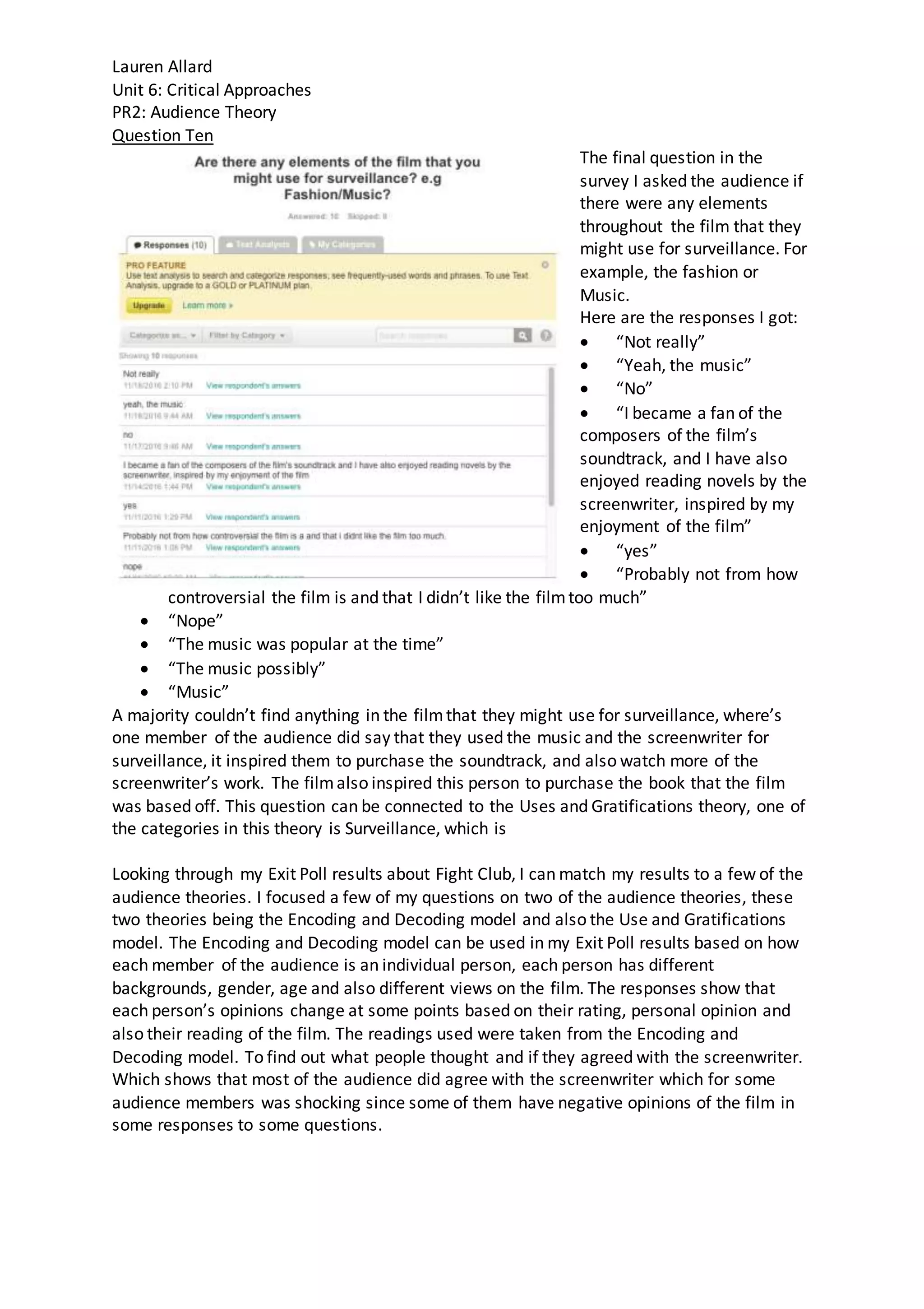This document provides an overview and analysis of the film Fight Club using various audience theory frameworks. It discusses the Hypodermic Model, Encoding/Decoding Model, and Uses and Gratifications Theory as applied to the film. It also summarizes the film's plot, release information, and the BBFC's rating of the film as an 18 despite some countries releasing it as a 15. Key details about the film and how audience theories help explain different audience interpretations are analyzed.











